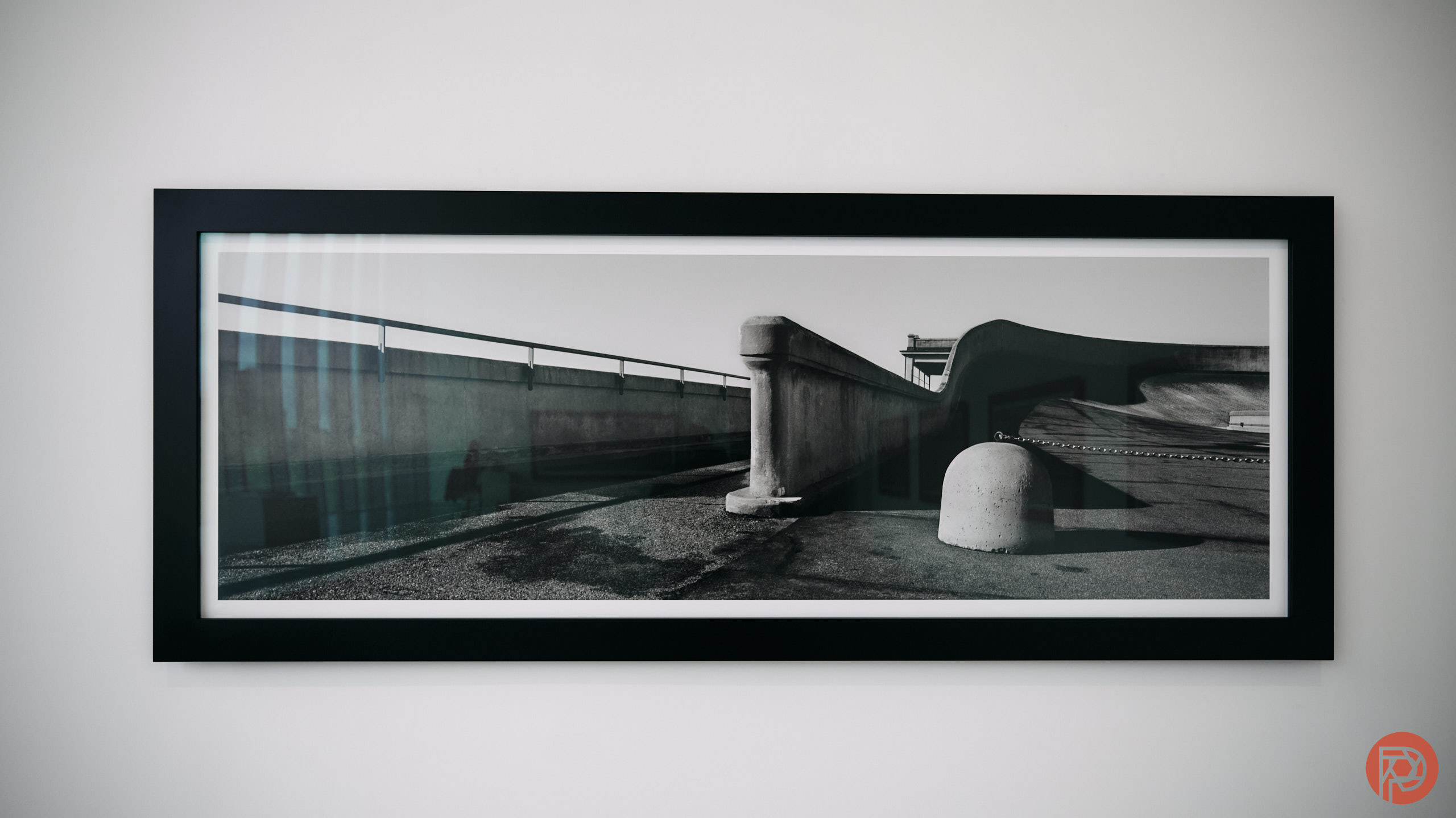
Exiting the elevator on the 7th floor of Pace Gallery thrusts a person right into the latest solo exhibition of the incredible Josef Koudelka. But it doesn’t prepare you for what you’re about to experience. It feels almost like you understand a secret language only true artists and photographers speak. Specifically, one must also understand the Koudlekan dialect — which should be a romance language in which one must forget all they know about landscapes and documentary photography. One can stare at Josef’s images the way one stares at the stars at night in amazement and wonder.
Josef Koudelka Industry can be seen at Pace Gallery in NYC until April 27th, 2024.
Josef Koudelka: His Importance
“Photography is big,” Koudleka is quoted saying in a 2015 article we wrote. “There’s room for everyone.” That’s part of what’s so incredible about his work. His images take the panoramic format, mix in black and white, and add abstractions to the many landscapes he photographs. There’s a genre of photographers who wouldn’t call what he does landscape photography, but it is a completely different type. Josef documents slices of life without humans that tell many stories in single frames. His work is brilliant because Josef doesn’t only look, but he sees. More specifically, he sees and understands what the human eye and a camera can’t see — then he makes his images.
Josef is arguably one of the most important Magnum Photographers alive today — and I’d argue that he will be one of the most important even when he passes. To this day, no one has made work like him. He’s known for his panoramic work, though he’s also done a lot of other documentary-style images. We called his book Chaos the greatest black-and-white photography book ever made. And he also rated Exiles as a book that would inspire you.
Solo exhibits of Koudelka’s are fairly rare — a notable one was at the Leitz Museum a few years ago.
A New Yorker article relates that Josef once had his belongings stolen from him and hints that lost images of his might be out there still.
The Photos of a Quiet Genius at Pace Gallery
The room at Pace Gallery has only a few massive prints on the wall hanging in a frame. When you look at the images, you see one world — and when you turn around, you see the buildings of NYC. In this one room, you’re absolutely, fully surrounded by Industry — which is what this series is about. That means the prints have reflections, but they pretty much disappear at the right viewing distance. However, that doesn’t fight the urge to get close to the prints and observe their little details.
Along another wall, you’ll find loads of small prints that look almost like a stack your grandfather would pull out of his wallet. These require you to get up close — and they’ll all transport you to a place you wouldn’t have thought existed. In this way, you realize the true power of print’s ability to be able to captivate someone even at a small size. Of course, it helps that the work is great and matters how it was done.
But one of the best parts is the display of Josef’s books. Books often go mostly untouched in most exhibits and galleries because of the understanding that you’re in a museum exhibit. However, you’re really encouraged to go through the books here. Joel Meyerowitz, another Magnum photographer, teaches an important lesson of engaging the senses- perhaps the biggest thing here. As video engages the eyes and ears, the print engages the eyes and hands. Touch and sight are where some photographers might get the best experience coupled with the subtle northern light from the floor-to-ceiling windows. That light provides a soft glow to the images in the book, making them radiate a beauty akin to a family wearing their Sunday best to church.








